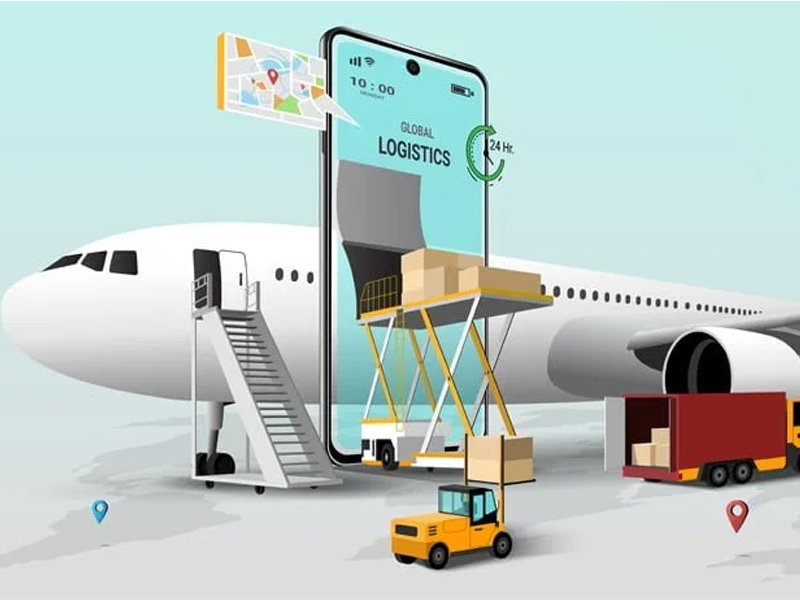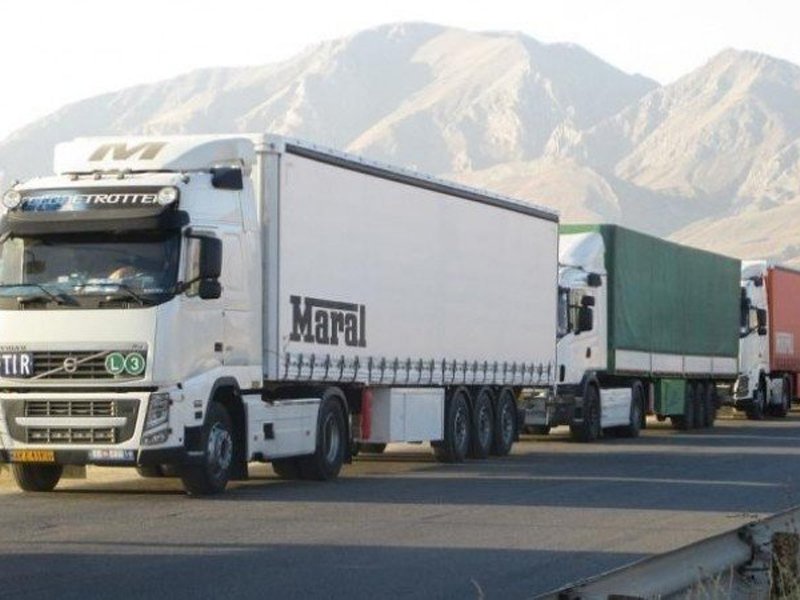Shipping goods between Iran and China has grown significantly in recent years, driven by strategic trade relationships and China’s Belt and Road Initiative. For businesses looking to establish or expand their presence along this route, freight forwarding plays a crucial role in ensuring smooth, compliant, and cost-effective logistics. In this guide, we explore the essential elements of choosing a reliable freight forwarder, the most suitable shipping methods, regulatory aspects, and strategic benefits for businesses shipping from Iran to China.
1. Understanding Freight Forwarding: Why It Matters in Iran-China Trade
Freight forwarding is the process of coordinating the shipment of goods between suppliers and recipients, which in international trade means navigating complex routes, multiple carriers, and international regulations. Freight forwarders specialize in:
Logistics Coordination: Managing multimodal transport across air, sea, and land.
Customs and Documentation: Ensuring all legal and regulatory documents are complete.
Cost Optimization: Providing cost-efficient transport solutions.
Risk Mitigation: Offering insurance and handling unexpected issues along the way.
For Iran-China trade, an experienced freight forwarder with regional knowledge is essential. They understand the nuances of both countries’ regulations, security requirements, and logistical networks, reducing delays, preventing penalties, and optimizing costs. Their expertise in logistics allows businesses to focus on production and distribution rather than the intricacies of international shipping.

2. Key Benefits of Using a Freight Forwarder for Iran-China Shipments
Using a freight forwarder offers a range of advantages:
Compliance and Risk Management: Freight forwarders are familiar with export and import regulations, ensuring compliance with customs protocols, tariff schedules, and trade policies in both Iran and China.
Optimized Routes and Cost Savings: Forwarders can identify the most economical and efficient routes based on cargo size, type, and delivery requirements. For instance, they can find less congested ports, secure favorable rates, and manage seasonal price fluctuations.
Integrated Warehousing and Distribution: Many freight forwarders offer warehousing solutions for goods awaiting shipment or distribution, making it easier to manage inventory along the supply chain.
End-to-End Tracking and Transparency: Through advanced tracking systems, shippers can monitor goods in real-time and receive timely updates on their shipment’s status.
Read more: Importing from Iran
Contact us to inquire about shipping rates.
3. Shipping Methods from Iran to China
Different types of cargo and delivery deadlines require various transportation modes, and Iran-China trade offers flexibility across air, ocean, and rail freight options.
Ocean Freight
Ocean freight is the most common and economical option for bulk shipping from Iran to China. Key Iranian ports like Bandar Abbas and Chabahar provide strategic export points, and China’s well-developed ports are well-equipped to handle large volumes of imports. While ocean freight offers cost savings for high-volume cargo, it generally requires longer transit times.
Commonly Shipped Goods: Industrial machinery, raw materials, petroleum products, textiles, and agricultural goods.
Transit Time: Typically takes 20 to 30 days, depending on specific ports and weather conditions.
Air Freight
For time-sensitive and smaller high-value shipments, air freight is an ideal solution. Air freight routes connect major Iranian airports, like Imam Khomeini International Airport in Tehran, to various Chinese cities. Though more costly than sea freight, it ensures faster delivery for goods that need prompt arrival, such as perishables, pharmaceuticals, or electronics.
Transit Time: Air freight typically ranges from 1 to 4 days, depending on the final destination.
Rail and Land Freight
With China’s Belt and Road Initiative, rail and overland routes from Iran to China have become viable, blending cost-efficiency with shorter delivery times than sea freight. Rail freight, in particular, is growing in popularity as it offers a balance between cost, speed, and sustainability.
Transit Time: Around 15-20 days, making it faster than sea freight but less costly than air.
4. How to Choose a Reliable Freight Forwarder for Iran-China Shipping
When selecting a freight forwarder, businesses should assess key areas to ensure a seamless shipping experience:
Regional Expertise and Experience: Freight forwarders with established expertise in Iran-China trade are well-versed in the regulatory requirements of both countries, including tariff structures and trade policies, making them better equipped to navigate the route efficiently.
Carrier Network and Relationships: A forwarder with a robust network of carriers and partners can secure favorable shipping rates, even during high-demand periods. Their established relationships with airlines, ocean carriers, and rail networks provide flexibility and priority access to shipping slots.
Technological Infrastructure for Tracking: Modern freight forwarders use digital tracking systems, offering shippers transparency and real-time updates on their shipments’ progress. This visibility enables businesses to manage their inventory, mitigate delays, and address issues proactively.
Comprehensive Service Offerings: Choose a forwarder that provides a complete range of services, from warehousing and customs brokerage to packaging and cargo insurance, to ensure a streamlined experience from origin to destination.
Read more: Freight Forwarder For Shipping From Iran to India

5. Navigating Customs and Regulatory Compliance
Each country has specific import-export regulations, making customs management crucial. Freight forwarders handle documentation, tax payments, tariff management, and regulatory compliance on behalf of businesses to avoid penalties or delays. For Iran-China trade, customs brokerage expertise is particularly important due to nuanced regulations around various goods, ensuring that the right permits and clearances are obtained before shipping.
Key Documents Required:
Commercial Invoice: Details about the goods, including price, quantity, and shipment terms.
Bill of Lading (BOL): Proof of contract between shipper and carrier, required for ocean freight.
Certificate of Origin: Specifies the origin of goods, often needed for tariffs.
Packing List: Describes the items being shipped, including dimensions and weight.
- Freight Forwarding Costs and Factors Influencing Prices
The cost of freight forwarding depends on various factors:
Mode of Transport: Air freight is more expensive than ocean and rail.
Shipping Volume: Larger shipments may benefit from reduced rates.
Seasonal Demand: Peak shipping seasons can raise prices.
Customs and Tariff Requirements: Certain goods may incur higher tariffs, and regulations may differ based on product type.
7. Top Considerations for Iran-China Trade Logistics
Economic Trends: Tracking economic indicators and trade agreements between Iran and China can help businesses plan around potential tariffs or policy changes.
Supply Chain Stability: Freight forwarders mitigate risks like supply chain disruptions or port congestion through proactive planning, such as booking alternative routes if required.
Language and Cultural Barriers: Freight forwarders manage communication between countries, handling contracts, negotiations, and documents to avoid misunderstandings.
Conclusion
Freight forwarding is integral to managing the complexities of shipping from Iran to China, a trade route rich with economic opportunity and logistical challenges. Working with a trusted freight forwarder can ensure efficient logistics, regulatory compliance, and cost-effective shipping solutions tailored to the unique needs of your business. As Iran-China trade relations continue to strengthen, leveraging the expertise of a seasoned freight forwarder is key to establishing a successful and seamless supply chain.
FAQs
A freight forwarder simplifies the shipping process by handling logistics, documentation, and customs compliance for shipments from Iran to China. They provide cost-effective solutions, coordinate transportation options (sea, air, or multimodal), and offer real-time tracking for transparency. Additionally, freight forwarders can help manage risks by providing cargo insurance, offering flexible routing options, and ensuring compliance with the customs requirements in both countries.
Transit time from Iran to China varies depending on the shipping method. Ocean freight generally takes 20–30 days, while air freight is much faster, typically taking 3–7 days. A freight forwarder can help optimize transit times by selecting the most efficient route, securing space with reliable carriers, and coordinating multimodal solutions when necessary. They also handle customs procedures promptly to avoid unnecessary delays, ensuring that goods reach their destination as quickly as possible.










2 Responses
What is the best shipping route for sending goods from China to Iran?
The most common and cost-effective shipping route from China to Iran is sea freight via Bandar Abbas. Cargo is typically shipped from major Chinese ports like Shanghai, Ningbo, or Shenzhen to Bandar Abbas Port, which serves as Iran’s main gateway for imports. From there, goods can be transported by road or rail to other Iranian cities. Transit time usually ranges between 20 to 30 days, depending on the carrier and port congestion.